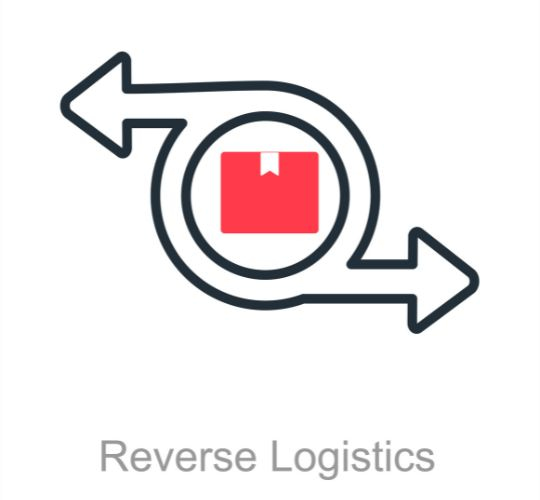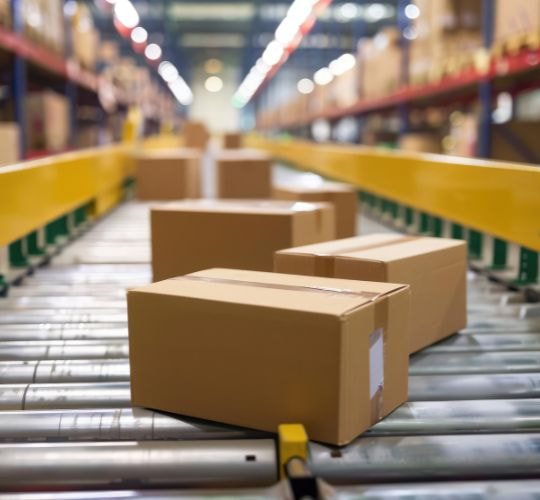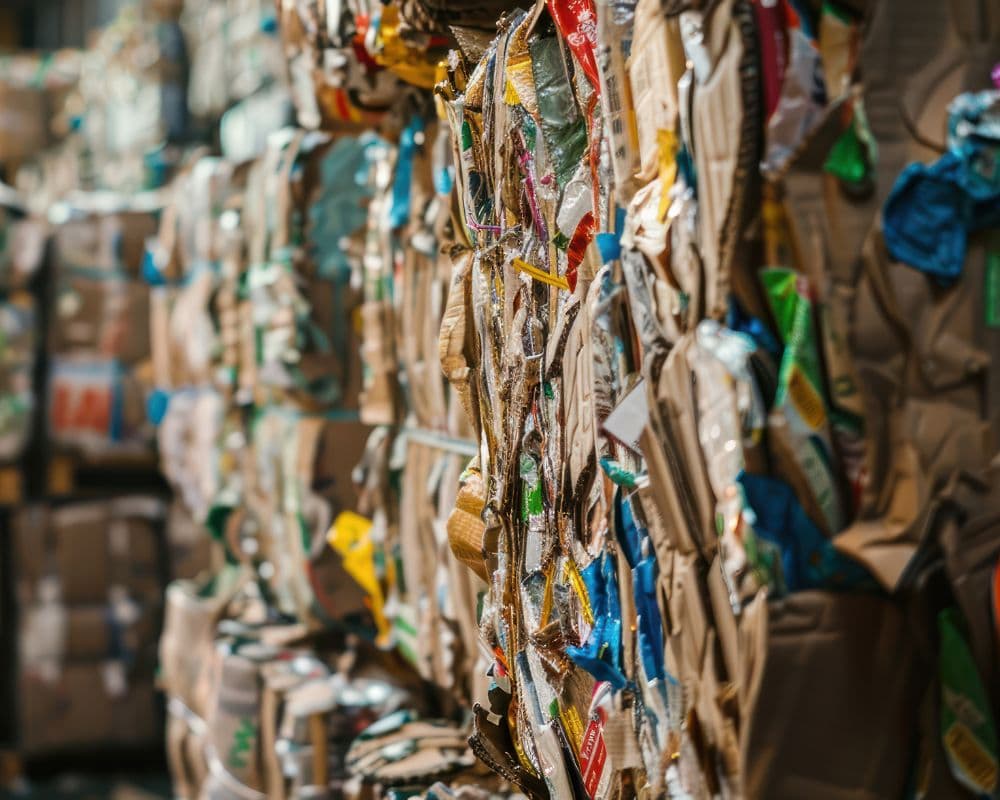Discover how a supply chain works
What is reverse logistics? 2024 Trends
Ultimately, the supply chain does not end with the delivery of the product to the end customer. Let us think, for example, about merchandise that does not meet the buyer’s expectations. In this and other cases, the item must be returned to where it came from.
We say that logistics or distribution is reverse (reverse logistics) when the merchandise returns to its origin from its destination. Ergo, as its name suggests, it is a logistics process that manages the reverse flow to the flow followed by the product to be delivered.
This process constitutes the last stage of the supply chain and goes far beyond returns logistics. In fact, it may also be due to a failed delivery or the need to repair or recycle the product sent. As a result, it affects both customer satisfaction and sustainability.
Discover how we can help you.
Contact usAdvantages of outsourcing reverse logistics
When managed correctly, reverse logistics brings significant benefits to companies. This is why most businesses are incredibly careful when choosing the logistics operator that will conduct this task.
Promotes environmental sustainability
Far from being a passing fad, environmental awareness is here to stay in our homes and businesses. At this point, it is worth remembering that sustainability finds one of its strongest allies in retrologistics.
This stage of the supply chain has several ways to take care of the planet:

- Repairing a product is more environmentally friendly than manufacturing a new one.
- It makes it possible to recycle goods that are no longer useful and to use components that are still useful.
- The return of goods to their point of origin can be managed in the least polluting way possible, for example, by optimising routes.
Save money and optimize resources
Recycling goods, in addition to being environmentally friendly, saves companies a good amount of money. After all, using materials is always cheaper than buying new raw materials.
When we talk about reverse distribution, the economic savings also manifest themselves in the reduction of losses. Certainly, the reuse of products and packaging combats waste and helps us to squeeze every euro we invest in the logistics process.

Boosting the corporate brand
Any company with well-managed reverse logistics is perceived as more efficient and reliable. Such a reinforcement of your corporate image is of great help when it comes to improving your relationships with customers, suppliers and partners.
Strengthen stock control
Return logistics requires investing more resources to maintain strict control of our stock through rigorous planning. However, meeting this higher level of demand results in reducing the margin of error and unnecessary expenses.
It helps you know your products
The final phase of the supply chain provides us with a valuable source of information about the goods we sell.
This is especially useful in the case of returns logistics, as it allows us to analyse crucial aspects to improve our products. When you know which product is returned the most and why, you will be closer to preventing this from happening in the future.
Improve customer experience
There are many examples of reverse logistics that show how its management helps to build customer loyalty. As buyers, even when we are not satisfied with a product, we appreciate that returns logistics work quickly, flexibly and easily. Can you think of a better way to take advantage of adversity to your own advantage?
We all know the high level of demand placed on those who make their purchases online. This rigor underlines the decisive role that reverse logistics plays in e-commerce. After all, such sensitive aspects as fast processing and free delivery depend on it.
Offers new market opportunities
Reusing goods is one of the pillars on which the circular economy is based. It is a powerful trend, closely linked to sustainability, which opens up new possibilities for companies willing to expand their niche, including repair and reconditioning operations.
Optimize the supply chain
Obviously, saving costs and resources has a powerful impact on increasing the efficiency of the supply chain. Certainly, good management of reverse logistics translates into improving its operation by saving time and money.
How exactly does reverse logistics work?
The truth is that reverse logistics does not always work in the same way. Ultimately, the processes involved will vary depending on the goods to be transported and the company. However, to give you an idea, here we show you the most common way of proceeding in this area.
Collection of goods
Logically, this logistics stage begins at the last stage of the supply chain and consists of removing the goods from their intended destination. Therefore, it is necessary to collect them in order to take them from the end customer to the company that sent them.
Classification
In order to optimise the subsequent stages, it is advisable to classify the withdrawn goods. This will make it easier for the company to decide what to do with them in each case (recycling, destruction, dismantling, sale, etc.).
Reuse
This phase is appropriate when the item is susceptible to reuse but is not yet ready for immediate distribution, which is particularly common for certain types of goods. To restore it to optimal condition, it will be necessary to carry out the corresponding operation, namely: reconditioning, recycling or repair.
Return to warehouse
When the goods are in suitable conditions for distribution, they are sent back to the warehouse of origin. There, after inventory is taken, their shipment to new sales channels will be managed.
Destruction of unusable products
Sometimes goods become completely unusable. This may happen because they cannot be reused or because reselling them would not be profitable. In any case, in such cases they are recycled or, as a last resort, disposed of. Likewise, it will be essential to use safe destruction methods if the materials to be processed are dangerous.
Utilization of components
The method of destruction of goods considered useless must always prioritize profitability. That is why such processes tend to recover most of their components, to convert them into new raw materials if possible. This possibility, known as post-consumption, is common in those products that can be partially reused.
Donation of goods
The company can also donate its unsold products to charities. This possibility, although it does not provide direct economic benefits, has a very positive impact on its reputation.
Bureaucratic procedures
Reverse logistics tasks do not only involve managing goods, but also completing the relevant bureaucratic procedures. Thus, it is necessary to document in each case what the logistics operations were and how they were carried out.
Challenges of reverse logistics
While reverse logistics brings with it numerous benefits when managed properly, it is worth remembering that it also poses quite a few challenges. Working with a logistics operator that is up to the task will be crucial to meeting these challenges and staying ahead of our competitors.
Quality control
The main challenge of returns logistics is having to control the condition of the returned goods. This manual supervision work must be exhaustive to avoid fraud and ensure that the product is resold in optimal conditions.
The problem of profitability
We must not forget that repeating the entire logistics process backwards means duplicating the operating costs that were already incurred to ship the goods. In this case, we must balance this extra cost so that the process remains profitable, in order to continue offering competitive prices.
Sometimes, putting the entire logistics return machinery into operation is not worth it. These are cases in which the returned goods are so insignificant that recycling or reusing them would be uneconomical.
Interdepartmental coordination
The fact that a merchandise must retrace its steps is something that concerns several departments of the company: SAT, technical support, finance, sales and logistics (unless it is outsourced). Properly coordinating the intervention of all of them becomes essential for this demanding process to unfold satisfactorily.
Increased workload
Indeed, return distribution is a challenge in itself. After all, turning the supply chain around always involves spending extra time, work and money. Getting everything right requires careful planning ahead of an already uncertain event.
Tackling return logistics in a globalized market
A digitalized and globalized economy like ours has led to international shipments becoming extremely frequent. However, when the shipped goods need to be returned, logistics will need to be adapted to all the variables inherent to cross-border transport (customs, exchange rates, time zones, etc.).
Compliance with environmental standards
Regulations on sustainability are becoming more and more abundant and rigorous. These regulations affect the transport and recycling of goods in particular. To make matters worse, compliance with them cannot undermine the profitability of the entire process.

Speed up merchandise collection times
One of the biggest challenges at this stage is to shorten the collection, exchange and refund times as much as possible. Obviously, getting the goods back as quickly as possible benefits everyone. That is why the best logistics operators design routes and strategies capable of speeding up the entire process.
Meeting customer expectations
With the rise of e-commerce, retrologistics today is much more demanding than a decade ago. After all, the digital customer wants a lot for very little. Consequently, the process must be accelerated, without incurring additional costs for the buyer.
Expert management of unpredictability
The irregularity of returns flows makes them unpredictable. This makes it more difficult to plan the necessary resources in advance. Likewise, the uncertainty inherent in reverse logistics will make it more difficult for us to maintain optimal stock levels.
Without a doubt, transforming the challenges of reverse logistics into opportunities for your business is possible when you work with a logistics partner like Logisfashion. Leave it in our hands and benefit from personalized and comprehensive management that takes your customers’ satisfaction to the top.
